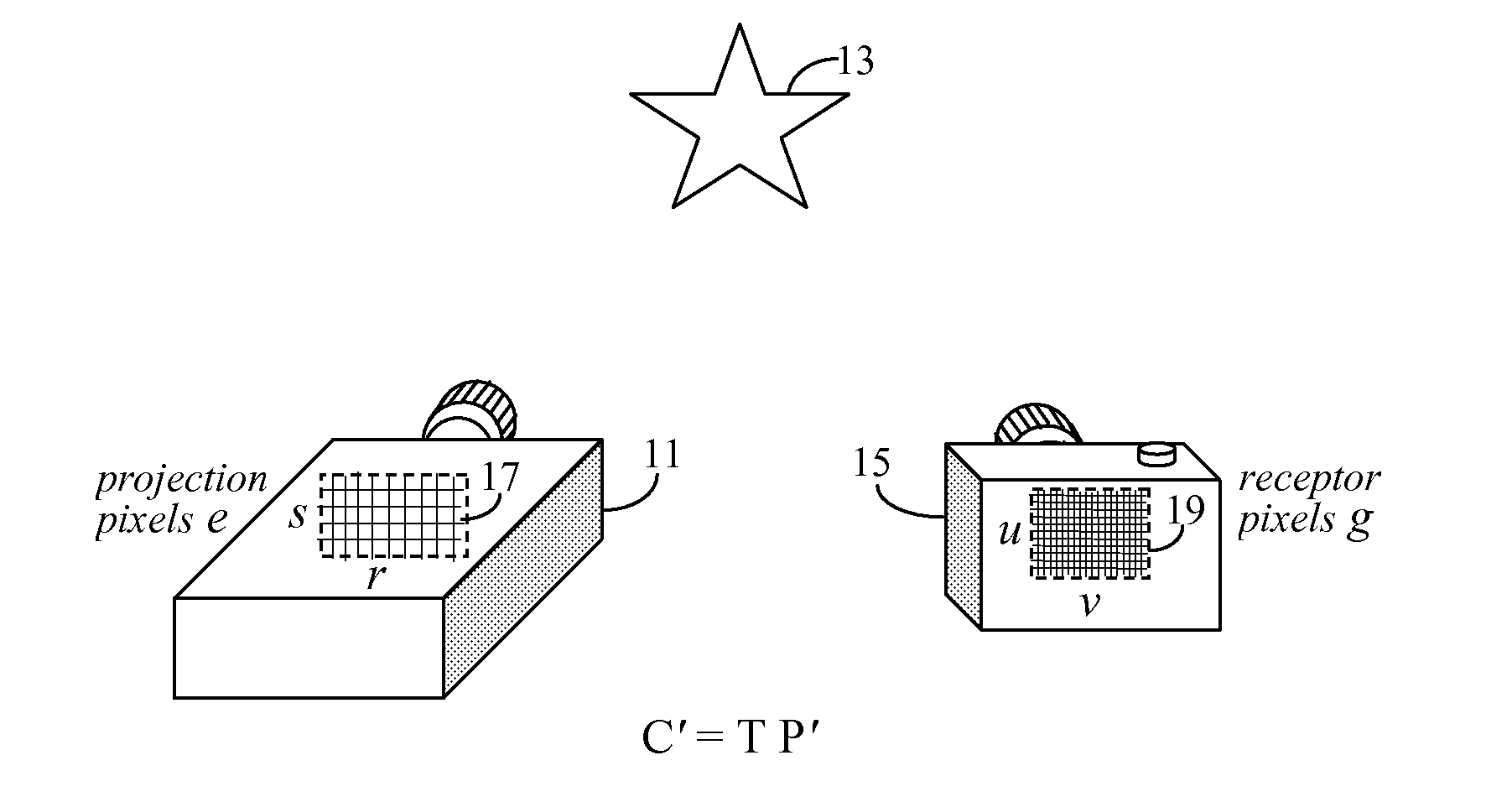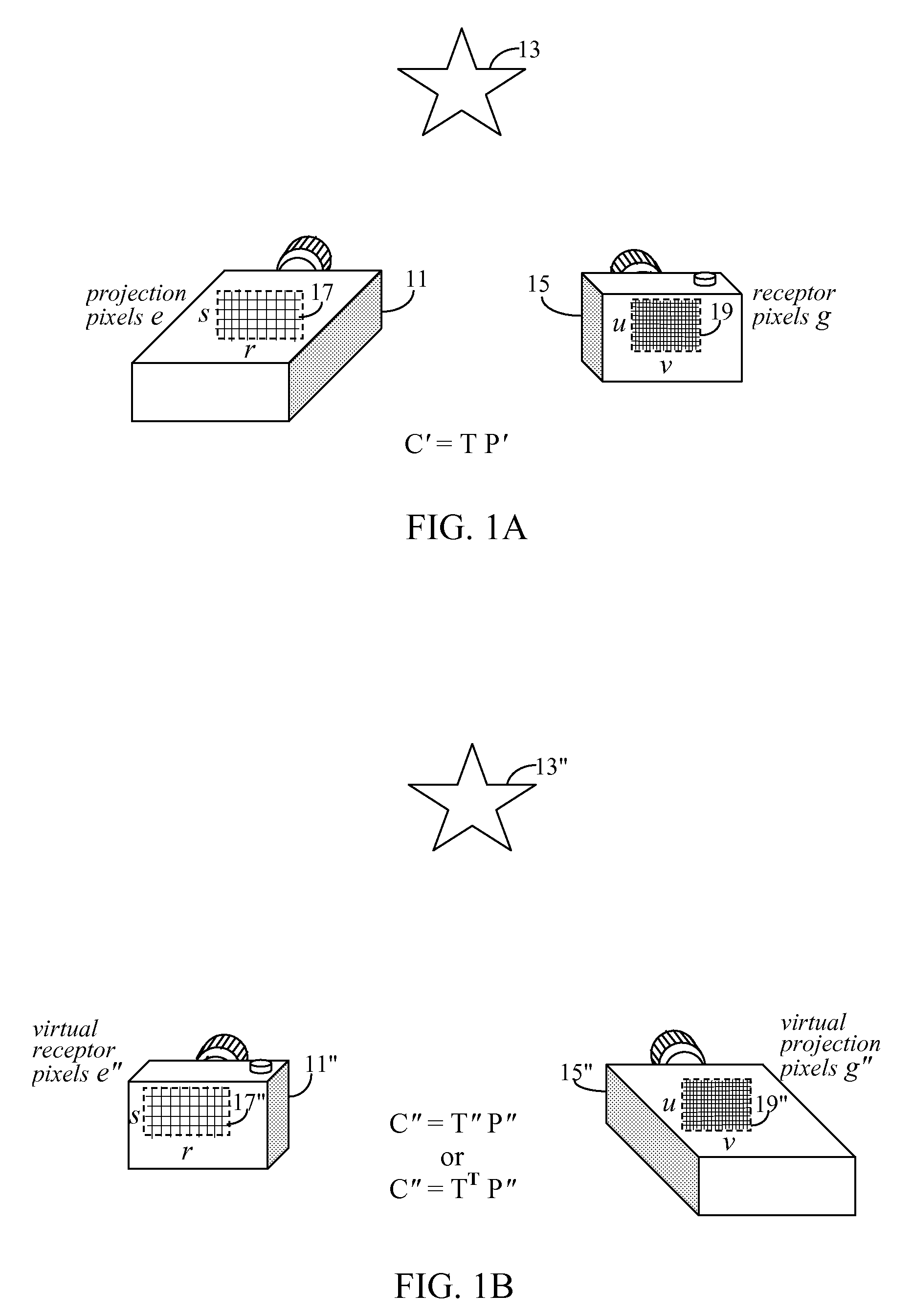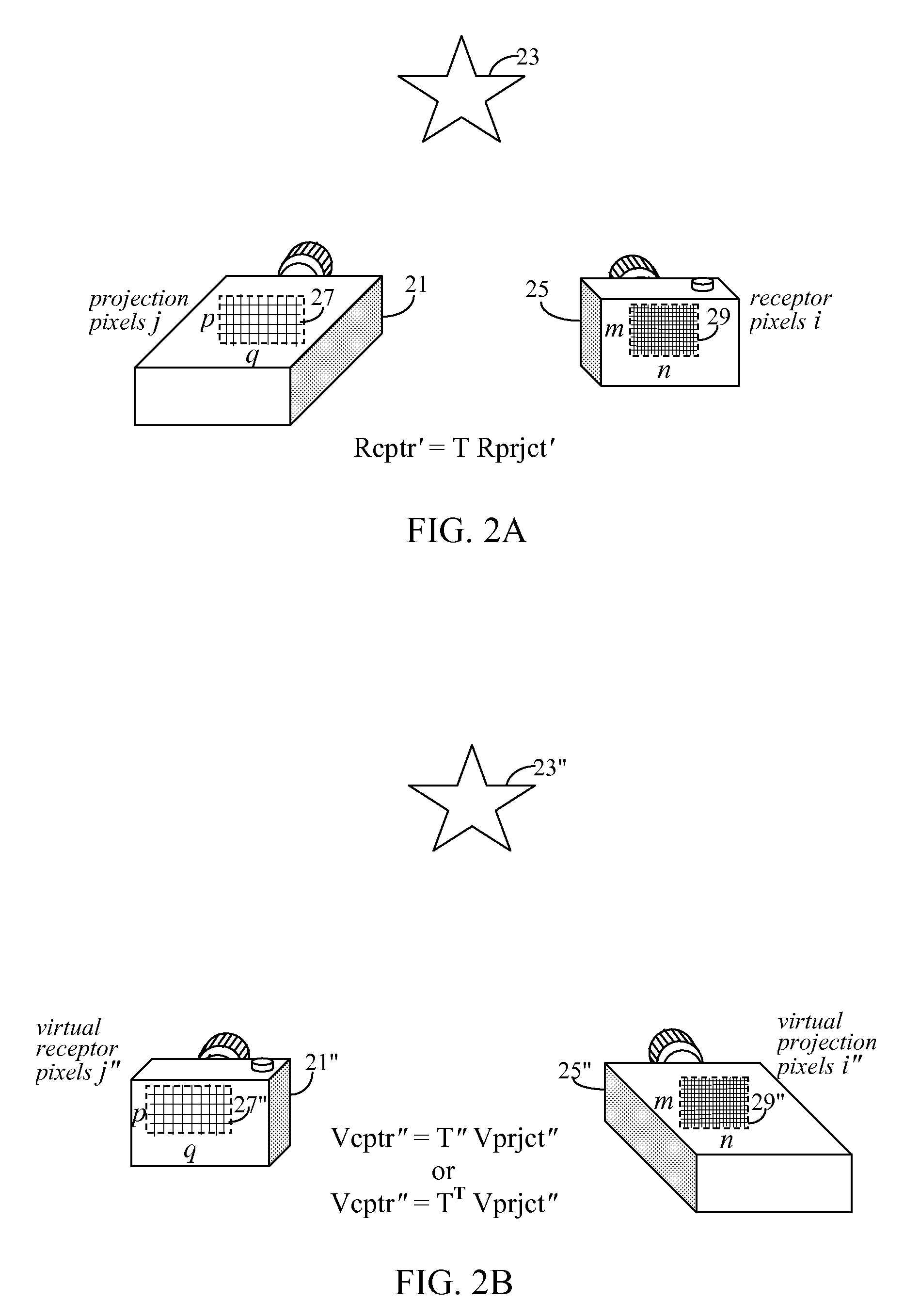Efficient Dual Photography
a dual-photography and efficient technology, applied in the field of calibrating projectors, can solve the problems of inability to capture images, inapplicability to the calibration of self-contained projector-camera devices, and real practical limitations on their use, so as to simplify the application of dual photography
- Summary
- Abstract
- Description
- Claims
- Application Information
AI Technical Summary
Benefits of technology
Problems solved by technology
Method used
Image
Examples
Embodiment Construction
[0053]If projectors could capture images, then there would be no need to differentiate between real projectors and real cameras, and projector-camera systems could be treated like multi-camera systems. Subsequently, the standard camera calibration techniques described above could be used to calibrate projector-camera systems. In other words, if the projector could be treated as a pseudo-camera, then it could be calibrated along with a real camera in a manner similar to the camera calibration stage of the multi-camera system described above, and the “bootstrapping” projector calibration stage might be eliminated.
[0054]Consequently, whereas in the “bootstrapping” projection calibration technique, a projector would project known feature points to be captured by a stereo pair of pre-calibrated cameras onto a known projection surface to determine the contours of the projection surface, a dual photography technique could eliminates the need for the stereo pair pre-calibrated cameras.
[0055...
PUM
 Login to View More
Login to View More Abstract
Description
Claims
Application Information
 Login to View More
Login to View More - R&D
- Intellectual Property
- Life Sciences
- Materials
- Tech Scout
- Unparalleled Data Quality
- Higher Quality Content
- 60% Fewer Hallucinations
Browse by: Latest US Patents, China's latest patents, Technical Efficacy Thesaurus, Application Domain, Technology Topic, Popular Technical Reports.
© 2025 PatSnap. All rights reserved.Legal|Privacy policy|Modern Slavery Act Transparency Statement|Sitemap|About US| Contact US: help@patsnap.com



